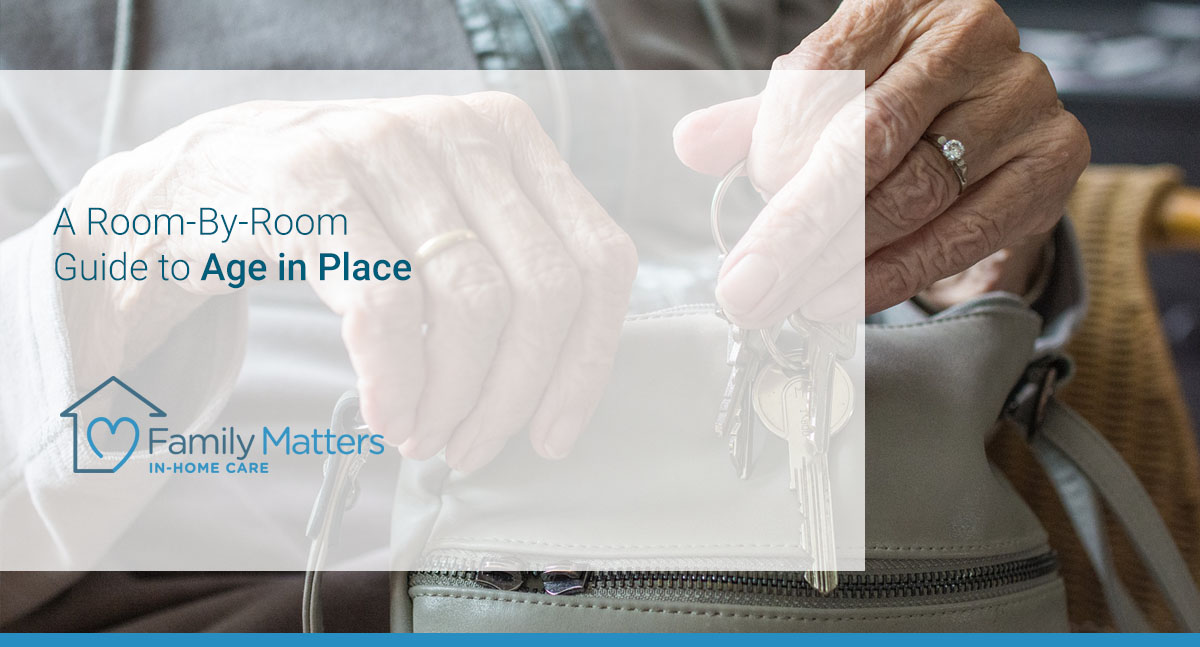
A Room-By-Room Guide to Age in Place
These days, modern medicine and technology help people live longer and healthier lives. However, as we age, it’s still normal to need further assistance.
While there are so many assisted living communities, many seniors prefer to age in place. This is a choice often made in tandem with in-home care options.
There are several considerations for older adults hoping to stay in their homes for as long as possible. This room-by-room guide to age in place is a good starting point when it’s time to make a home safe, convenient, and comfortable for the elderly.
Living Room Modifications
Whether for relaxation or entertainment, the living room is often the heart of a home. That makes it especially important to have safety measures in place for seniors who will be spending a lot of time in this area.
One of the biggest hazards seniors face in the living room is difficulty standing up and sitting down.
Adjust Furniture
Make sure that all furnishings are the appropriate height for residents who use them most often. Being able to sit and stand easily can be helpful for sensitive joints. It can also prevent falls.
Move Tables and Rugs
Moving area rugs and small tables to the sides of the room or out of the room entirely is advisable. The edges of these furnishings can trip seniors easily.
Modify Lighting
As we age, it’s normal for our eyesight to fluctuate. While lighting in a living room is important to avoid strained vision, light switches placed too high or too far from sofas can be an issue. Consider swapping out manual switches for remote-controlled versions that seniors can carry with them. This reduces the risk of injury and ensures proper lighting is always in place and accessible.
Kitchen Modifications
The kitchen is likely the most important room to equip for seniors who choose to remain in their own homes while aging. From cooking dinner to family gatherings, the kitchen brings loved ones together but comes with its own set of hazards, too.
Adjust Shelving
As mobility becomes more of an issue, adjusting storage and shelving for food and ingredients is vital. It’s important to ensure that a senior doesn’t have to climb any steps or ladders to reach what they need in a pantry. It’s just as important to consider similar shelving adjustments in fridges and cabinets to avoid injury.
Add Expiration Date Labels
Appetites can dwindle with age, which can cause issues with expired food in the home. Consider adding large expiration labels to foods that would be dangerous to consume if left unattended for too long, like eggs and poultry.
Provide Emergency Contact Info
It’s also important to make modifications related to potential fire hazards in the kitchen. Make sure to post an emergency number list somewhere a senior can easily access it.
Having a fire extinguisher readily available is also key to safety standards. Swapping out a traditional oven for an automatic shut-off range is excellent for seniors who may be experiencing some amount of memory loss.
Bedroom Adjustments
Being able to go to sleep each night in a comfortable place is important for seniors. With that being said, the bedroom is occupied during times of the day when lighting isn’t optimal. This can increase the risk for falls and injury overall.
Add Bed Rails
Keeping a bedroom safe for seniors may require installing bed rails that can make it easier to get in and out of bed independently. Adjusting beds to comfortable heights is also key to avoiding falls.
Adjust Closet Accessibility
Making sure a bedroom has a clean, tidy, and accessible closet is also a good safety measure. Seniors shouldn’t have to reach or climb for clothing or storage on a top shelf.
Instead, move essential clothing to a lower rack for ease of mobility. Transitioning boxes from high closet shelves to lower dresser drawers can also be helpful.
Bathroom Essentials
A bathroom is an important place in a senior’s home. It’s also full of risks due to hard, slippery surfaces that can easily lead to injury.
Add Non-Slip Rugs
Something as simple as adding shower mats to the tub and non-slip mats to the main flooring can be lifesaving.
Install Shower Rails
For seniors that struggle more with mobility, adding shower rails is key to keeping showering safe. Shower chairs and benches can also be beneficial for those who can’t stand for the duration of cleansing.
If seniors in the home struggle with directions or memory, enlarging the hot and cold indicators on faucets can help prevent issues with scalding.
Outdoor Spaces
Everyone can use fresh air from time to time. This means that every room-by-room guide to age in place should take the great outdoors into consideration.
Whether seniors are working in the garden or simply taking in views from a patio, there’s a risk for injury outdoors. When seniors can no longer safely handle yard maintenance, it’s important to have a backup plan in place.
From snow removal to mowing the lawn, it’s good to have a professional team hired to handle the heavy lifting at this point in life. Additions like snow-melting mats on the walkways can help prevent trips, slips, and falls, too.
If you or your family member is considering in-home care as part of a plan to age in place, contact Family Matters In-Home Care today for a free consultation. Our team is dedicated to supporting your family and helping older adults enjoy life in the comfort of their own home for as long as possible.
Some of the services offered by Family Matter In-Home Care include: Alzheimer’s & Dementia Care, Bed & Wheelchair Transfer Assistance, Companionship, Housekeeping & Meal Preparation, Personal Care, Recovery Care, and Transportation.
Serving the San Francisco Bay Area and Greater San Diego, Family Matter In-Home Care has offices throughout California including: Campbell, CA, Roseville, CA, San Marcos, CA, and San Mateo, CA.
